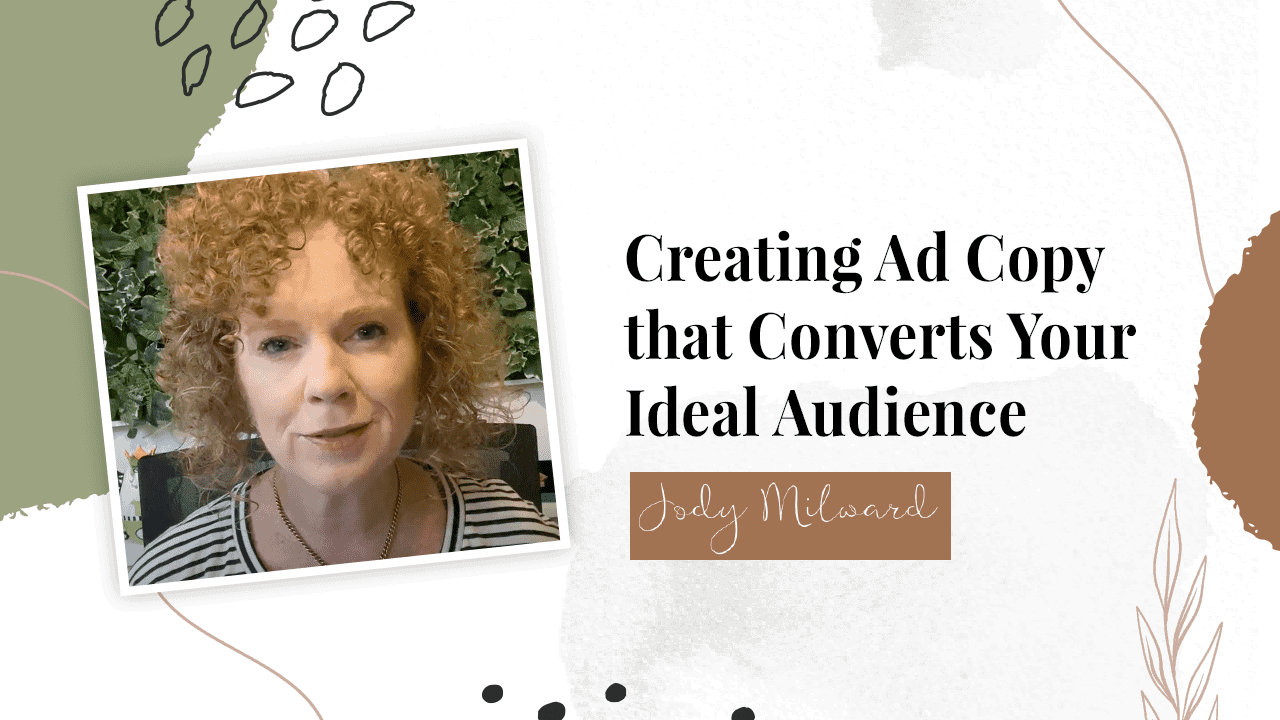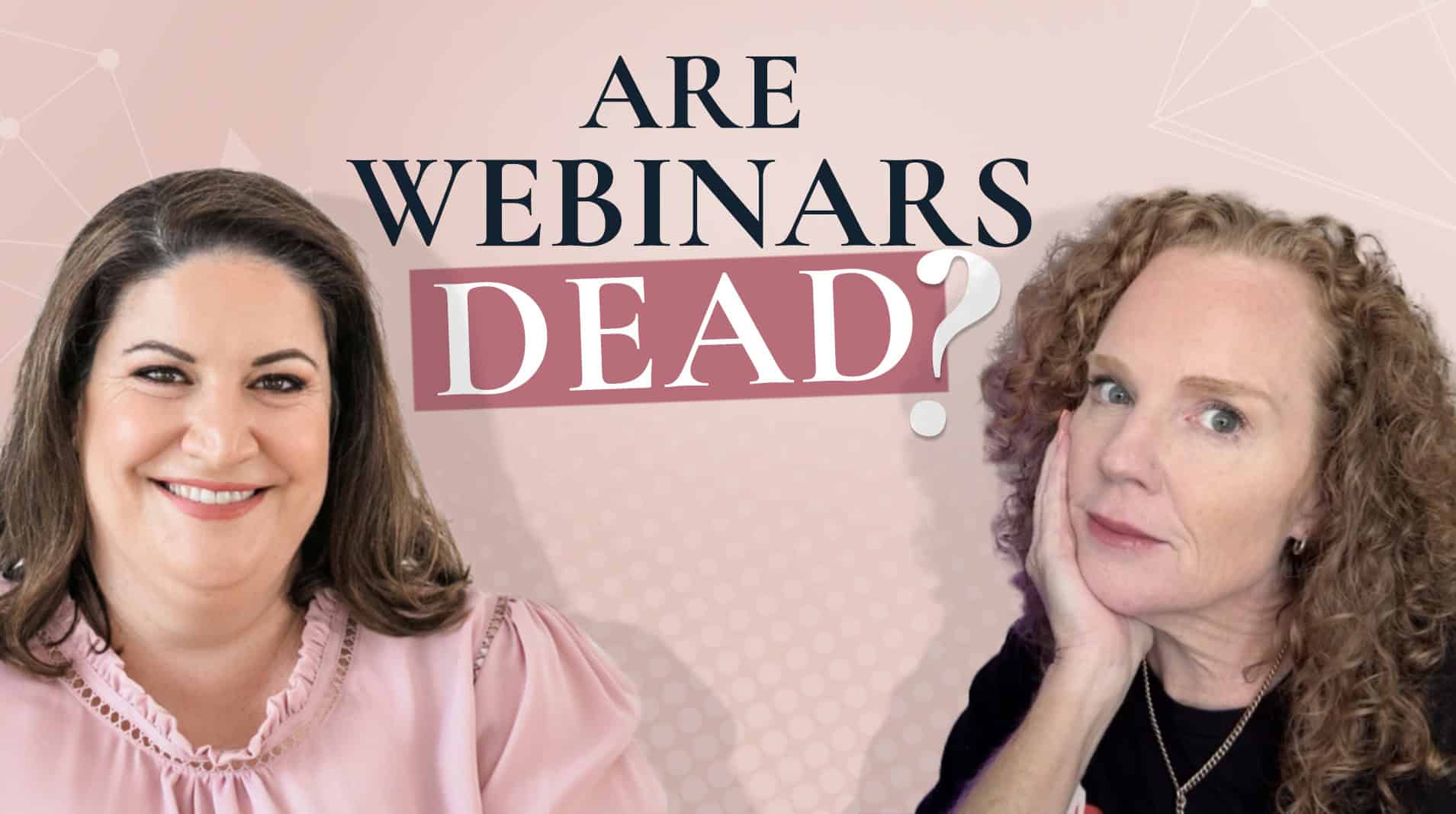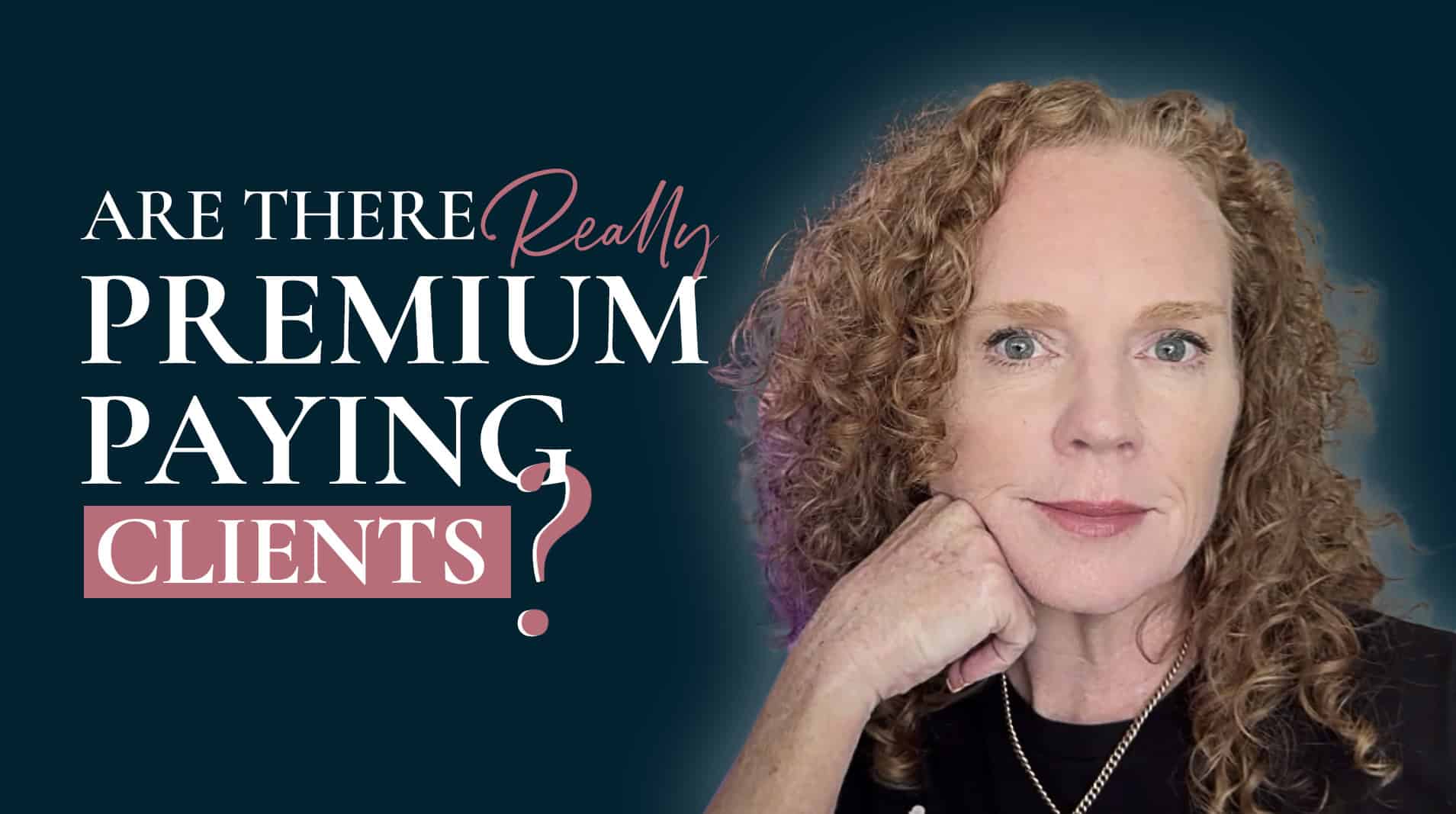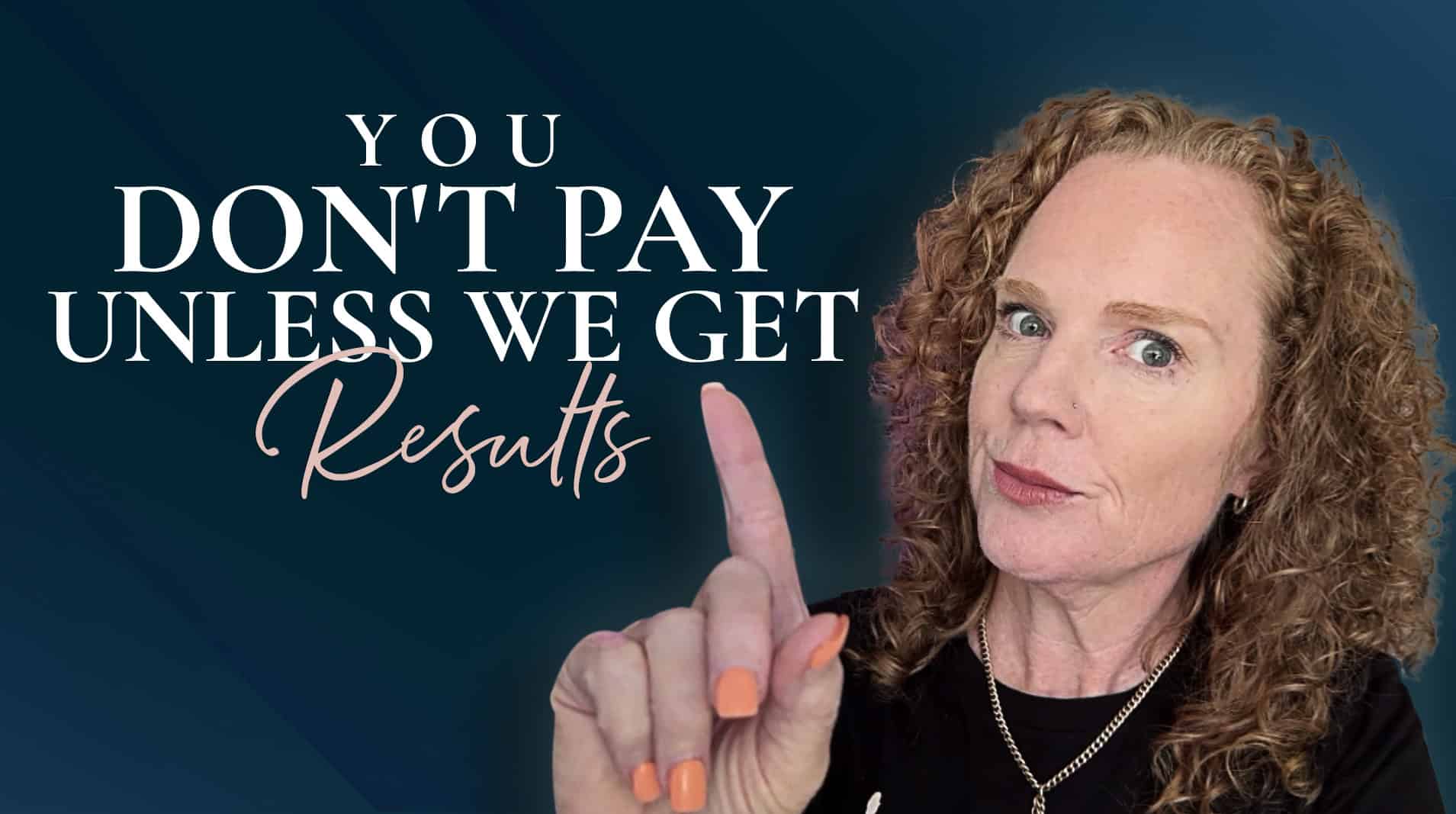Want to create copy that converts for your Facebook ads? That’s what we’re diving into today.
In this installment of Online Confidential, I’m taking you behind the scenes of Secret Ad Manager Business. In the previous installments of Online Confidential, we’ve looked at ways that we can improve the performance of our ads and get our audience to convert. We’ve looked at the creative, which is that image or video we’ve got in our ad. Is it making people stop in the newsfeed and have a look? Then the next section they’re going to look at is the headline. We looked at creating headlines with hooks. Then we looked at the messaging. Is the messaging coming out through our ads? Is it brilliant? Is it speaking to our ideal audience?
Now, we’re going to be looking at the way that we present that message with our copywriting. A great way to be able to do that is to be able to follow some templates. As an ad manager, you may not be a copywriter. And chances are that you’ve just come into Facebook ads and are just putting some ads together for your clients, or perhaps your clients are providing the ad copy. Being able to identify what makes good copy and a good flow of ads is going to really help you as you run ads for clients, because otherwise, you might be thinking the ads aren’t converting and saying, “It’s all my fault! I need to test some more audiences!” Whereas it might actually be that the copy is no good, or their message is no good, or their headline or the image isn’t working.
So that’s what the previous posts are going to help you to understand and how to dial all of that in. Therefore looking at the data will help in identifying where the bottleneck is. So that it’s not just running the same ad, testing all the different audiences, and then ripping your hair out because things just aren’t working. It could be the headline that needs revision, it could be the messaging, or it could be the copy.
So let’s dive in and look at some of the copywriting formulas that are going to help you as you may create some ad copy for your clients, or if the copy is provided to you, you can help to identify if the copy is going to resonate with your ideal audience. And if the clicks aren’t coming, you’ll know to maybe look at the copy and see where the issues may be.
When it comes to copywriting formulas, there are a few different ones. And then you can use them at different points of the funnel: top of the funnel, middle of the funnel, and bottom of the funnel. So let’s look at some top-of-funnel ad copy.
PAS formula (Pain, Agitate, Solution)
So we want to identify the pain points of our ideal avatar. We want to then agitate it. We want to twist the knife a bit and illustrate what the problems are if their pain or their problem continues as is. Then we want to present to them a solution, which is typically your product offer or service.
In my Elite Ad Manager training, I have my elite ad managers go through all these exercises, and I refer them to go and look at Amazon reviews or look at client testimonials. Or if the client has done onboarding interviews with their clients, then accessing those interviews so that they can clearly see what the pain points are that people are saying that they have and the agitation that results from the pain points. What’s the effect of this problem that they’re currently having, and then highlight them even more. So by being able to go and look at your Amazon reviews or client testimonials or client interviews, you are able to capture the exact words that they’re saying, which is absolutely golden. You don’t have to try and think it up. You don’t have to go, “Gee, I wonder how they’re feeling about this.” It’s likely that it’s already there.
So use that in your ad copy, and it will resonate and speak volumes to the potential clients that are going through the newsfeed. That’s when you want to present the solution, which is your product offer or service. So it may be how this master class is going to give you three keys to help solve X, Y, Z.
BAB formula (Before, After, Bridge)
How was the ideal client feeling before when people have gone through and watched the master class, or actually gone through and done the training or paid program? How were they feeling before now, after going through the training, after they’ve done your program, how are they feeling now? What’s the effect? And then how was your program, product, or service offer? How was it the bridge to help them get there? So that’s the before, after, and bridge,
This formula can be used at multiple points in the funnel. It can be used top of the funnel. It can be used middle of the funnel, and it can be used very effectively at the bottom of the funnel when people have gone through it. This is also a great formula to use for testimonials. So if you’ve ever gotten a client that you’re wanting a testimonial for based on your ad services, then this is a great framework of before, after, and bridge. How their clients were before working with them, what their life is like now (after), and how working with them was the bridge to be able to get them from where they were to where they are now.
SLAP formula (Stop, Look, Act, Purchase)
Now this is a great one to use at the bottom of the funnel. This is stop, look, act, and purchase. It’s short, sharp, and precise. And that’s why it’s typically used at the bottom of the funnel. Or if you have a self-liquidating offer, this can also be used effectively at the top of the funnel because again, we’re just getting people straight over to our sales page to come and purchase because it’s a low price point and low friction. It’s capturing their attention with the first line, having them look and then go through the ad copy that we’ve got where we want them to take action, and then here is where our call to action or come over to purchase happens.
AIDA formula (Attention, Interest, Desire, Action)
We want to be capturing our audience’s attention, and a great way to be able to do this is tapping back over into the headlines that we looked at a couple of posts ago, where we’re creating headlines with brilliant hooks and the formulas that we use there. So capturing their attention could be like: Imagine what it would be like to have 30 new clients for your group coaching program each month. Or imagine what it would be like not having to worry about where your next lead is going to come from. Using the “imagine factor” from your headlines in your ad copy as well can work great, particularly at the start of your copy. It is a great way to draw people into the post and read the rest of your ad copy. Then for interest, we want to pique their interest and we want them to start seeing what life may be like when they’ve resolved these problems. This will help them get tapped into their desires that they’re actually wanting. Then comes action. We want them to click and go watch our training or click here to go and learn more. This can be used in multiple points of the funnel. Typically, top-of-funnel ad copy. It works very well there. It can also be very effective in our middle of the funnel. It would typically be a more condensed version.
For example, if you’ve had people going to your webinar registration page and they have not opted in, then an AIDA copy would be effective here. It would be retargeting people who visited the landing page and did not opt-in, which could work very effectively with a bit of a different hook than the original ad copy that got them there.
So let’s recap our formulas:
PAS – pain, agitate, solution
BAB – before, after, bridge
SLAP – stop, look, act, purchase
AIDA – attention, interest, desire, action
So there you go! Now you have some of the framework that you can keep in mind if you are creating ad copy for clients, or if you have clients providing ad copy to you. Look and see if these points are being addressed in the ad copy. If not, try to figure out how they can be added or tweaked to cover these points.
When you have the framework, it’s going to make it so much easier for you rather than just feeling like you’re throwing spaghetti at the wall and seeing what may stick. Following a framework is going to make things so much easier for you and help you to identify if your ads aren’t converting.
If you’d like to know more about my Elite Ad Manager training, head over to eliteadmanager.com and learn more.




